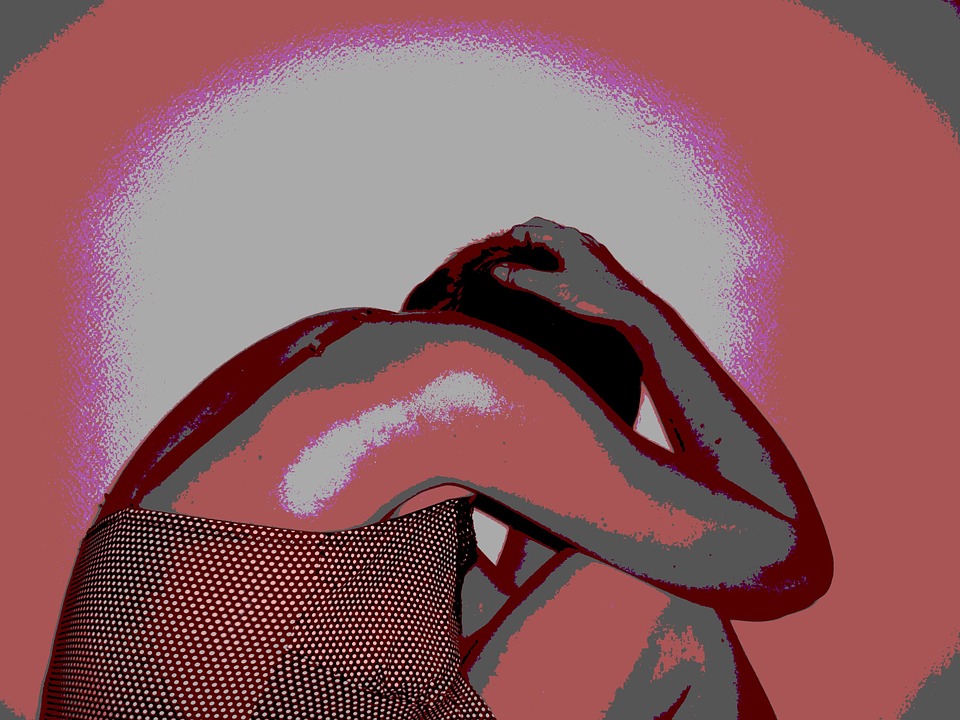“Surely that isn’t possible,” she said, this woman who loved and was loved by an amazing man for thirty-three years.
“Oh, but it is possible. Not only possible, but it happens more often than you might think.” I countered with the mental images of countless women whose stories underscore the truth.
 Domestic abuse DOES happen in some Christian homes. In fact, one out of three women live in destructive relationships.
Domestic abuse DOES happen in some Christian homes. In fact, one out of three women live in destructive relationships.
We never hear about it from the pulpit or recognize this tragedy until a marriage ends or a woman is carried out of her home, strapped to a gurney.
Everyone understands domestic violence. We all know the origin of blackened eyes, purple bruises or broken fingers.
But domestic abuse hides behind mental prisons, within emotional scars. We cannot see this type of ugliness, and we don’t want to admit it happens—especially within the sanctity of the church.
Yet it will continue if we keep its dirty secret. Too many hurting victims afraid to confess their truth. Too many abusers comfortable with their shame.
And we cannot find hope until we unveil the ugly truth.
On the back pages of my novel, “No Visible Scars,” I have listed some of the symptoms of domestic abuse. These come from years of working with women, resources from safe places where women seek shelter, and trusted professionals such as Leslie Vernick.
These are some of the scars my heroine, Abigail, suffers. The same scars women suffered during biblical times and still suffer today.
Read and consider. Are you hiding behind some of these symptoms? Do you know a woman who might be struggling to find hope? Do you know a man who brags about treating “his woman” this way?
- Using the Bible or religious traditions to put down women
- Degrading her in front of the children and/or in public
- Playing good guy / bad guy. She never knows who will be walking in the door.
- Snooping in her mail or purse
- Controlling behaviors
- Forceful sexual advances and/or rape
- Giving her the silent treatment
These are only a few of the symptoms listed and shown through the story of Abigail. But the saddest aspect of domestic abuse is that many women have been taught they must put up with it—that God demands they must submit and learn how to be quiet, gentle women.
This is such a putrid lie.
We can go to the same Bible often used as a weapon to find the truth. Consider how Jesus treated women, how he respected them, valued them, defended them, allowed them to join his tribe and listen to his teachings.
Consider what God Himself did to Abigail’s abusive husband, Nabal. “The Lord smote Nabal and he died” (1 Samuel 25:38).
In essence, God was saying, “Don’t mess with my daughters.”
The same God loves and defends his daughters today. How can we do less? How can we offer hope to the women in our churches, our families, our communities?
We start by telling the truth, by admitting that it happens and calling it out. Then we support and encourage these women when they come for help. And we teach our children well—our sons how to treat their sisters, our daughters to embrace empowerment.
Domestic abuse will not go away until we underscore its ugliness and uncover its hiding places.
Shouldn’t those of us who sit in church pews be the first to make a difference? Shouldn’t we follow our precious worship songs with the cry “Enough!”
Can’t we examine our teachings and some of the false assumptions we have transmitted through the years?
We are made in the image of God, male and female. And as the divine image bearers, we need to be more proactive to respect each other, to defend women and their children and to make sure our men are living examples of godly behavior.
Let’s share the hope where it is needed most.
©2018 RJ Thesman – All Rights Reserved
Read about Abigail’s story in “No Visible Scars.”
Such an important message and yes another important “issue” – not really an issue, but abuse being overlooked by the church. Keep speaking the truth.
Thanks, Susan. You, too – keep speaking the truth.
A timely clarion call. May the shift in thinking come, through voices as yours.
Thanks, Jerry. May it be.